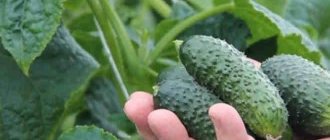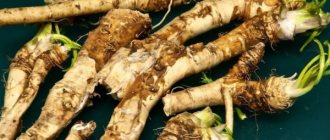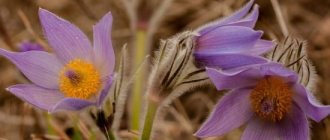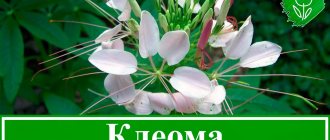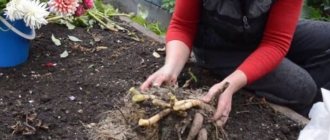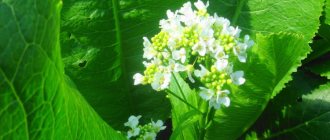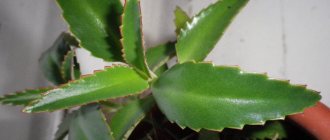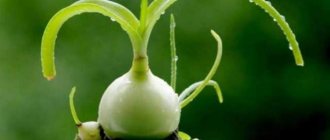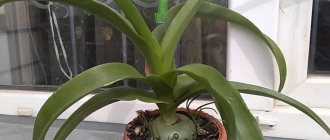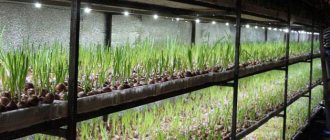How to plant horseradish on the plot
Horseradish is a vegetable plant that belongs to the perennial herbs. It has powerful, well-developed rhizomes and large oblong leaves. It is distinguished by excellent winter hardiness, drought resistance and general vitality, therefore it is grown in both European and Asian countries. Often, gardeners grow non-selective (“folk”) varieties of horseradish (Suzdal, Valkovsky, Latvian, Rostovsky), although there are also cultivated varieties - Atlant and Tolpukhovsky, which are distinguished by a milder taste and less tendency to spread throughout the area.
Horseradish leaves and rhizomes contain:
- phytoncides and essential oils that have a bactericidal effect;
- vitamin C (up to 0.2 g per 100 g);
- allyl mustard oil (used in cooking and folk medicine);
- vitamins of group B and PP;
- a large amount of carotene (115 mg per 100 g).
Horseradish rhizomes not only improve the taste of various dishes, but also contain many useful substances
Planting and growing horseradish is not difficult: it is very unpretentious and hardy - so much so that many consider it a malicious weed and try to keep it out of the garden. True, this vegetable turns into a weed if it is not properly cared for. Horseradish can remain in one place for 10–12 years, but it is advisable to dig up the rhizomes 1–2 years after planting, otherwise the plant “goes wild”, the roots branch out and go deep, so its removal becomes very difficult.
The vegetable is most often grown in open ground, but you can also do it in a greenhouse if you need to speed up its ripening.
Despite its sufficient resistance to shading, horseradish still does not like strong shade, so you need to choose a place for it in the garden away from dense trees or shrubs. Many gardeners recommend planting vegetables along the fence.
Horseradish vegetable - description
The horseradish root crop is thick and fleshy, the stem is straight but branched, reaching a height of 50 to 150 cm. The leaves are basal, very large, oblong-oval, crenate, heart-shaped at the base. The lower leaves are pinnately divided, and the upper ones are linear, entire. The flowers of the plant are white, with petals up to 6 mm long. The fruits are swollen, oblong-oval pods 5-6 mm long with a net-veined pattern on the valves. Inside the pods are nests with four seeds.
Horseradish is a surprisingly unpretentious plant, and if you once plant it on your site, it will be there forever - this perennial winter-hardy crop behaves aggressively, like a real weed.
All parts of the plant contain essential oil with a pungent taste and aroma. The composition of horseradish root juice includes ascorbic acid, thiamine, riboflavin, carotene, starch, carbohydrates, fatty oil, resinous substances and lysozyme protein, which has an antimicrobial effect. Horseradish root contains mineral salts of calcium, potassium, magnesium, sulfur, phosphorus, copper and iron. The healing properties of horseradish have long been known to medicine: it improves intestinal function, has antiscorbutic, choleretic and expectorant properties, treats colds, diseases of the liver, gastrointestinal tract and bladder, rheumatism and gout.
- Potatoes: growing in the garden, storage, varieties
In this article we will tell you how to grow horseradish in open ground:
- when and how to plant horseradish;
- how to water horseradish;
- how to fertilize horseradish;
- what does horseradish suffer from?
- how to treat horseradish against diseases and pests;
- when to dig up horseradish;
- how to plant winter horseradish;
- how to store horseradish until the new harvest.
Planting dates: summer and winter
Horseradish has so much vitality that it can be planted at almost any time of the year:
- plant cuttings in the spring, when the soil has already thawed (the second half of April is considered the best time). In case of severe return frosts, the cuttings may not take root, so it is necessary to wait until the soil temperature is above +5 ° C;
- plant the plant in the fall (second ten days of September - mid-October for central Russia). There should be 12-14 days left before frost. If autumn is dry, the plantings will need to be watered. As a rule, plants take root well and tolerate winter well;
- Throughout the summer you can both plant and replant horseradish. It is advisable to choose a cloudy day and water the plantings properly to facilitate rooting. If the weather is very hot and dry, it is better to refrain from planting horseradish in the summer;
Horseradish can be planted and replanted even in summer in the absence of drought
- It is possible to plant horseradish before winter in late October - early November. To do this, in the first half of October you need to clear the soil of weeds and plant debris, then dig it deep. The cuttings should be buried deeper than during spring planting (by 3–4 cm) to protect them from frost.
Preparing the soil before planting
For planting horseradish by root, select an area with a deep arable layer, loamy or sandy loam soil with low groundwater. Land from old garbage dumps is suitable. Place it along the fence or in the corners of the garden plot.
Soil preparation begins in the fall. After early crops, the soil is pre-loosened, provoking the germination of weeds. After crops with late harvest dates, the soil is dug up immediately to a depth of at least 30 cm, and the rhizomes of perennial weeds are removed. In the fall, 8-10 kg of organic fertilizers, 30-40 g of superphosphate, 25-30 g of potassium salt per 1 m2 are added for digging. During pre-sowing tillage in the spring, add 20-30 g of nitrogen fertilizers per 1 m2. Strongly acidic soils are limed at the rate of 2-8 g per 1 m2.
Planting horseradish and caring for it is much easier than clearing the area of it later. To clean the area where horseradish used to grow, a fence is dug around the perimeter, in the fall the soil is dug up as thoroughly as possible and the smallest remnants of roots are manually selected. In early spring, as soon as young leaves begin to grow from root stumps, the fenced area is tightly covered with roofing felt, blocking access to light to the plants. The coating is not removed for two years.
Planting horseradish with cuttings
Horseradish rarely produces seeds, so it is most often propagated by cuttings, which are actually pieces of roots.
Site selection and soil preparation
Before planting horseradish on your site, you need to choose the right place for it. It is advisable to plant the plant in sun or partial shade. The soil must have high moisture and breathability. In principle, horseradish can grow on any soil, but on heavy clay soils it forms bitter and hard, woody roots, and on sandy soils it turns out tasteless. To obtain good quality rhizomes, you need to plant the plant on fertile chernozems, loams, sandy loams or drained peatlands, enriched with organic fertilizers.
Black soil is good soil for horseradish.
It is good to plant horseradish where tomatoes, potatoes and other vegetables previously grew.
The soil needs to be prepared in advance: for example, for spring planting, the soil is prepared in the fall. The procedure is as follows:
- In the selected area, weeds are removed, organic fertilizers are scattered and dug up.
- In the spring, shortly before planting, another shallow digging is carried out with the application of mineral or organic fertilizers:
- potassium and ammonium nitrate, superphosphate, which are mixed in equal parts - dose 30 g/m2;
- a bucket of peat and sand on clay soils, as well as 10–12 kg of manure per square meter;
- 0.4–0.5 kg/m2 ash with increased soil acidity.
Preparation and storage of cuttings
You can easily prepare horseradish cuttings yourself. For this:
- When digging in autumn, you need to cut off annual growth from large rhizomes.
- The cuttings should have a length of 20–25 cm and a diameter of 0.5–1.5 cm, all lateral shoots and branches should be cut off.
- The top of the cutting must be cut at an angle of 90°, and the bottom - obliquely, so as not to confuse the upper and lower parts when planting.
- The cuttings should be tied into a bundle and placed in the cellar, sprinkled with slightly moistened sand or sawdust, or buried in the garden until spring.
Heavy soil moisture can cause premature root germination.
To prepare root cuttings, even pieces 20–25 cm long are cut from horseradish rhizomes.
You can prepare the material for planting in the spring, when the soil has thawed. Such cuttings should be planted in a permanent place as soon as possible.
The author successfully uses the “lazy” method of horseradish propagation. Considering the unique vitality of the plant, when digging up horseradish in the autumn, you can simply take excess small roots or pieces of roots (at least 8–10 cm long and at least 1 cm thick) and immediately plant them in a new place, deepening them by 5–6 cm. If good, With watering, usually even such cuttings root successfully and after 2 years produce rhizomes suitable for consumption.
Preparing cuttings for planting
In spring, pieces of roots begin to be prepared for planting:
- Within 12–15 days, the cuttings are moved to a place with a higher temperature and covered with damp cloth or a layer of peat to ensure germination.
- As soon as the cuttings germinate, all the “eyes” in the middle part “blind”. To do this, wipe the stalk with a piece of burlap, a rough mitten or the blunt side of a knife blade, leaving buds only in the upper and lower parts for the development of roots and leaf rosettes.
All the “eyes” of sprouted horseradish cuttings “blind”
Germination can also be carried out by digging the cuttings in a greenhouse (placed at an angle, with an oblique cut down).
Cuttings prepared in this way can be planted in the ground.
Video: preparing planting material - horseradish cuttings
If you don’t have your own planting material, buy a large horseradish rhizome, cut it into pieces (3–5 cm in length) and plant it in the ground in April. By autumn, the planted sections produce young growth, which will serve as planting material.
Apical buds
Another type of planting material is apical buds located at the end of the main shoot or lateral shoot, which are cut off with a piece of rhizome (2–3 cm).
The apical buds are marked with the number 6; the same ones appear along the upper edge of each cutting.
They can also be prepared in winter, since the buds hatch even on rhizomes stored in the refrigerator.
The sequence of actions is as follows:
- The material is placed in a container with fertile substrate and watered until roots appear.
- Then transfer each plant to a separate glass or pot.
After the roots have formed, pieces of horseradish root with apical buds are planted in a pot
- Remove excess leaves so that no more than two rosettes remain. This is required in order to provoke root growth.
- Prepared plants are planted in a permanent place, like cuttings, in April.
Planting horseradish in open ground
When planting horseradish cuttings in open ground, it is advisable to use a planting peg. With its help, an inclined (30–45 o) depression of the required length is obtained in the soil.
A planting peg is used to pierce the soil to plant the horseradish cutting at the desired angle.
The planting process consists of the following steps:
- The horseradish root is immersed in the recess made by the planting peg, directing it with an oblique cut downwards. Plants are planted in rows with a row spacing of 0.7–0.8 m and a gap between adjacent bushes in a row of 30–40 cm.
When planting, you should not confuse the upper and lower ends of the cuttings, but you should plant them at a slope, immersing the apical bud by 4–5 cm
- The apical bud is sprinkled with soil to a depth of 3–5 cm.
- For quick rooting, lightly compact the soil with your foot.
As a rule, there are 4–6 plants per square meter.
Video: horseradish planting
Recent Entries
5 working ways to use tar in the garden 7 indoor plants that help you get married even in adulthood Indoor plants that can bloom in trouble
When to plant horseradish
Horseradish is tenacious and can turn into the worst weed, so you shouldn’t stand on ceremony with it. Horseradish can be planted from early spring to autumn. Horseradish root grows into the ground to a depth of two meters, and reaches 10 cm in diameter. It produces lateral roots. It is impossible to get rid of horseradish that has been growing on the site for many years. Some gardeners dug a hole 2 meters deep where the horseradish grows, but never got to the end of the root. This plant grows even from a small piece left in the ground.
Horseradish root can grow underground and reach large sizes.
If you need a cultivated plant and not a weed, grow horseradish as an annual: planting in spring or autumn and completely digging it up when it is no more than a year old. It is important to consider the following nuances:
- In the spring, plant early, as soon as the ground thaws, and then in the summer, dig up individual roots for home preservation. Carry out a full excavation in October. Store rhizomes in a cellar or refrigerator;
- Autumn planting eliminates the need for winter storage of planting material. Immediately after digging up the thick rhizomes, leave the thick ones for food, and cut the cuttings from the thin ones and plant them again. You can also plant cut green tops. It is advisable to do this a month before the onset of cold weather so that the horseradish has time to take root;
- In the summer, horseradish is also planted, it takes root, but by autumn it does not have time to grow thick rhizomes. It will be possible to collect a full harvest only in the next summer and autumn.
Planting horseradish seeds
Horseradish bushes bloom in the second year of life, but usually no seeds are formed or appear in very small quantities. Therefore, propagation by seeds is rarely done.
Horseradish produces very pleasant fragrant flowers, but produces almost no seeds.
If you do collect or buy horseradish seeds, you can use them to grow vegetables. Horseradish is grown from seeds like any other winter-hardy crop. There is no need to process or stratify the seeds; no preliminary cultivation of seedlings is required. Sowing can be done directly into the ground in spring or before winter. The soil must be prepared in advance in the same way as for planting cuttings.
If desired, horseradish seeds can be treated with a growth stimulant, for example, Energen, before planting. To do this, dissolve 1 ml of the drug in 50 ml of water and soak the seeds for 6–20 hours.
Ease of growing horseradish
The method of caring for the crop depends on the relief features of the area. On flat areas, they make do with the usual loosening of the soil, but plants planted on ridges have to be hilled. When the first shoots appear, it is necessary to remove weak shoots, leaving only strong specimens. This is one of the important rules on how to grow horseradish in the country so that it does not spread throughout the garden. The gardener will receive an excellent harvest if he applies the basic rules of care:
- Loosening. Planted cuttings need oxygen, so the bed is weeded a week before germination. Then only the row spacing is treated and the weeds are removed in time.
- Feeding. We have already discussed above how to fertilize the soil. However, after 2-3 weeks the plant may develop very slowly. Then it is watered with mullein solution prepared in a ratio of 1:10. If necessary, use potassium and nitrogen complexes, but only after the first shoots appear.
- Watering. The culture is very moisture-loving, however, there is no need to flood it. It is enough to add 10-20 liters of water per 1 m². Weather conditions play a leading role in how to care for horseradish. If you overwater it, the rhizome will rot, and if you overdry it, it will become tough and stringy.
In July, the planting is dug up and the lateral shoots that have formed in the upper part of the tap root are cut off. After this, the crop is poured back in, compacted and the area is watered.
The listed methods of planting and caring for horseradish cannot be called standard. Much will depend on the climatic conditions of a particular region. Therefore, every gardener must understand the basic principles of this process, as well as the characteristics of the culture itself.
Methods for planting horseradish
Horseradish can be planted in the following ways:
- on a raised bed,
- in a bucket or barrel,
- in a “sleeve” made of polyethylene film.
Most often, horseradish is planted in high beds. This planting method is especially recommended for soils with a thin fertile layer or excess moisture. The height of the bed should be 25–30 cm: with this planting, the plants are not flooded with water during heavy rains and it also makes it easier to dig up rhizomes in the fall.
Planting horseradish in a raised bed is suitable for soils with a thin fertile layer or excess moisture.
Horseradish is planted in a bucket or barrel to limit its “spreading” throughout the garden. The difference between planting in a bucket and in a barrel is only in the number of plants that fit in these containers.
Horseradish is grown in a barrel or bucket as follows:
- A nutrient mixture of compost or humus with soil is poured into an old bucket (barrel).
- Bury the filled container in the ground so that the sides rise 2-3 cm above the surface. 2-3 rhizomes can be placed in each bucket, 5-6 in a barrel.
If you plant horseradish in a bucket, it will not spread around the area
- In autumn, the container is removed and turned on its side - in this case, the roots are easily removed and remain intact.
Watering and fertilizing plants in a barrel or bucket in the summer is carried out according to the general scheme.
Video: how to grow horseradish in a barrel
A sleeve made of thick (100 microns) polyethylene film also prevents the spread of horseradish throughout the area. The sleeve is chosen so that its diameter exceeds the thickness of the handle by 4–5 times.
Sequencing:
- The sleeve is filled with soil, the cutting is placed in it so that the upper end protrudes by 1–1.5 cm, and the lower end by 2 cm.
- The sleeve is then dug into the soil at an angle (30–35°). The film prevents the plant from forming lateral branches, and during the autumn harvest the rhizome is easily removed.
Types and varieties of horseradish
The best varieties of horseradish are:
- Atlant (or Wild) is a mid-season moisture-, drought- and frost-resistant variety with a rhizome 20 to 50 cm long, 4-5 cm in diameter and weighing from 190 to 380 g, with dense, not very juicy milky-white pulp;
- Valkovsky is a late-ripening variety, resistant to cruciferous midge and diseases, with a yellowish cylindrical root 50-60 cm long, 2-3 cm in diameter and an average weight of about 150 g;
- Suzdal - a variety with smooth roots up to 30 cm long and about 3 cm in diameter, without side branches, with juicy and “evil” white pulp;
- Tolpukhovsky is a late-ripening variety with roots 25-35 cm long and weighing from 65 to 250 g.
In addition to those described, such varieties of horseradish for open ground are known as Rizhsky, Yelgavsky, Latvian, Rostovsky, Volkovsky, Marune, Boris Yeltsin and others.
The winter-hardy, unpretentious and nutritious plant katran, which is not a variety of horseradish, but is related to it, is also grown in cultivation. Katran also has medicinal properties; it is as rich in vitamins and minerals as horseradish, but, unfortunately, it is not so well known. But katran does not have the drawback that makes gardeners sometimes reluctant to grow horseradish on their plots - while it has the same positive qualities as horseradish, it does not clog the garden with its root shoots. The leaves of the katran are large, light green in color with a blue tint. They are used boiled as a side dish for meat and fish dishes.
Planting care
To get a good harvest, you need to properly care for your plantings:
- pull out the weeds,
- loosen the soil
- water and feed.
When the first shoots of horseradish appear, thinning should be done so that only the strongest shoots remain. In July, the rhizomes are dug up and all lateral roots are cut off at a depth of up to 25 cm, then the roots are again covered with soil, compacted and watered properly.
Soil looseness is one of the main conditions for growing horseradish. A total of 3 loosenings will be required over the summer:
- 7–8 days after planting (depth 3–4 cm);
- then after germination of seedlings (depth 6–8 cm);
- then after another 12–14 days (by 10–12 cm).
You need to loosen carefully so as not to damage the young roots.
Loosen young plants with a rake, being careful not to damage the horseradish roots.
Horseradish has good drought resistance, but watering is necessary for rooting of cuttings. At first, it is carried out every 7–10 days at a rate of 2–3 l/m2 (in dry weather, watering becomes more frequent). When the plants take root, they need to be watered only in the absence of precipitation (3–4 l/m2).
It is not necessary to apply fertilizers - horseradish develops well without them. If desired, you can feed the plantings with complex fertilizers (50 g per bucket of water) once a month.
Harvesting and storing horseradish
Horseradish leaves begin to be cut in August - they are used as a spice when pickling cucumbers, tomatoes and other vegetables. Try not to cut off all the leaves from one plant, as missing them will prevent the root from developing. Leaves are cut at a height of 10-15 cm from the surface of the area so as not to damage young leaves and apical buds.
Mass harvesting of root crops begins in the third decade of October or early November, before the onset of frost, when the horseradish leaves turn yellow and begin to dry out. If you planted large cuttings, then the horseradish harvest is carried out in the year of planting; if the cuttings were small, then good root crops will ripen only the next year.
Before harvesting, the horseradish leaves are cut off, the root is dug up with a shovel and removed. Try not to leave even the smallest roots in the soil, otherwise they will turn into a malicious weed next year. The dug roots should be immediately transferred to a cool room, cleared of soil and side branches, lubricated with iodine at the cut points, and dried in a warm place with good ventilation for 24 hours. Then a layer of soil is poured into wooden boxes, on which the horseradish is laid in rows so that the roots do not touch. Each row of root vegetables is sprinkled with a layer of clean sand. Store boxes of horseradish in the basement or cellar.
If you do not have a suitable room, keep the horseradish in the refrigerator, but you can put roots no longer than 30 cm there, each of which must be wrapped in cling film, making several small holes in it for ventilation. Horseradish can be stored in the vegetable drawer of the refrigerator for about three weeks, and in the freezer for up to six months, but for this you need to peel it, cut it into cubes, blot off any moisture that appears and put it in a plastic bag.
Horseradish is also stored dried. It is cut into slices, laid out in one layer on a baking sheet and placed in an oven preheated to 60 ºC for an hour and a half. When the horseradish has dried and hardened, it is ground in a coffee grinder, crushed with a grater or pounded in a mortar, poured into a glass or porcelain container and covered with a lid. If necessary, the powder is soaked in water and used for its intended purpose. Dried horseradish can be stored for up to 2 years.
You can also store horseradish in a marinade. To do this, well-washed and peeled roots in an amount of 1 kg are crushed in a meat grinder or on a grater, placed tightly in a pre-sterilized glass jar and poured with marinade: add one tablespoon of sugar and salt to 250 ml of boiling water, and then remove from heat. pour 125 ml of six percent apple cider vinegar into boiling water. Vinegar can be replaced with one tablespoon of citric acid. After you have poured the boiling marinade over the horseradish, seal the jar with a sterile metal lid. In this form, horseradish can be stored for several years.
Compatibility with other plants
Horseradish is a rather aggressive plant. He himself easily tolerates the proximity of other plants; the only things undesirable for him are tomatoes, beans and strawberries. And it is also advisable not to plant horseradish near trees and shrubs, because tree roots will interfere with the extraction of horseradish rhizomes.
Aromatic herbs and potatoes are considered good neighbors for this vegetable. It is even recommended to plant horseradish next to potatoes as a means to repel the Colorado potato beetle. Rhubarb tolerates horseradish well, and this plant is good as a precursor for broccoli.
They can't stand horseradish being around:
- artichoke;
- swede;
- turnip;
- carrot;
- Bulgarian pepper;
- scorzonera (Spanish goat, or black root).
In general, it is best to plant a vegetable that is “not sweeter than a radish” away from other plants - at the border of the plot or in the corner of the garden - and limit its ability to spread to the sides.
